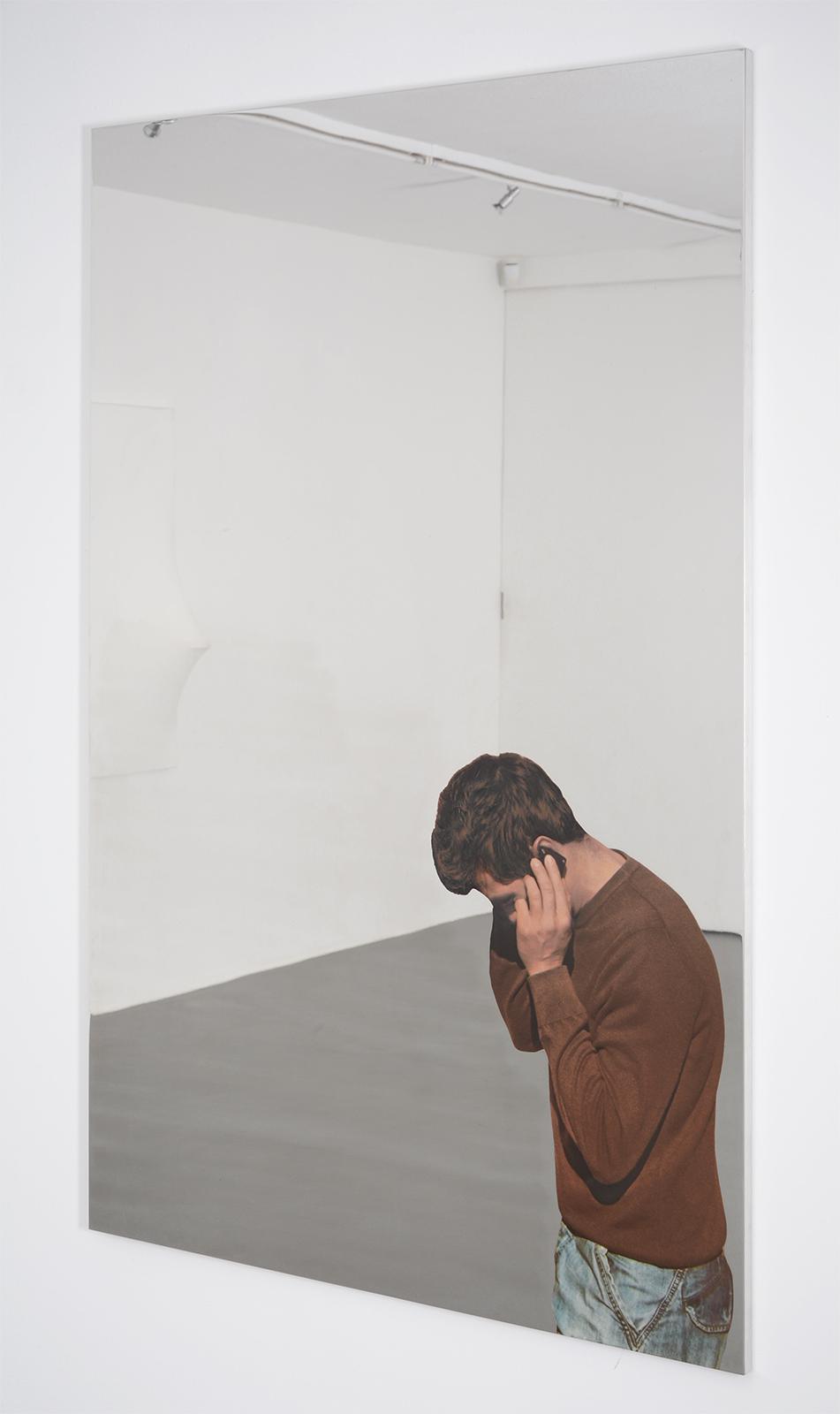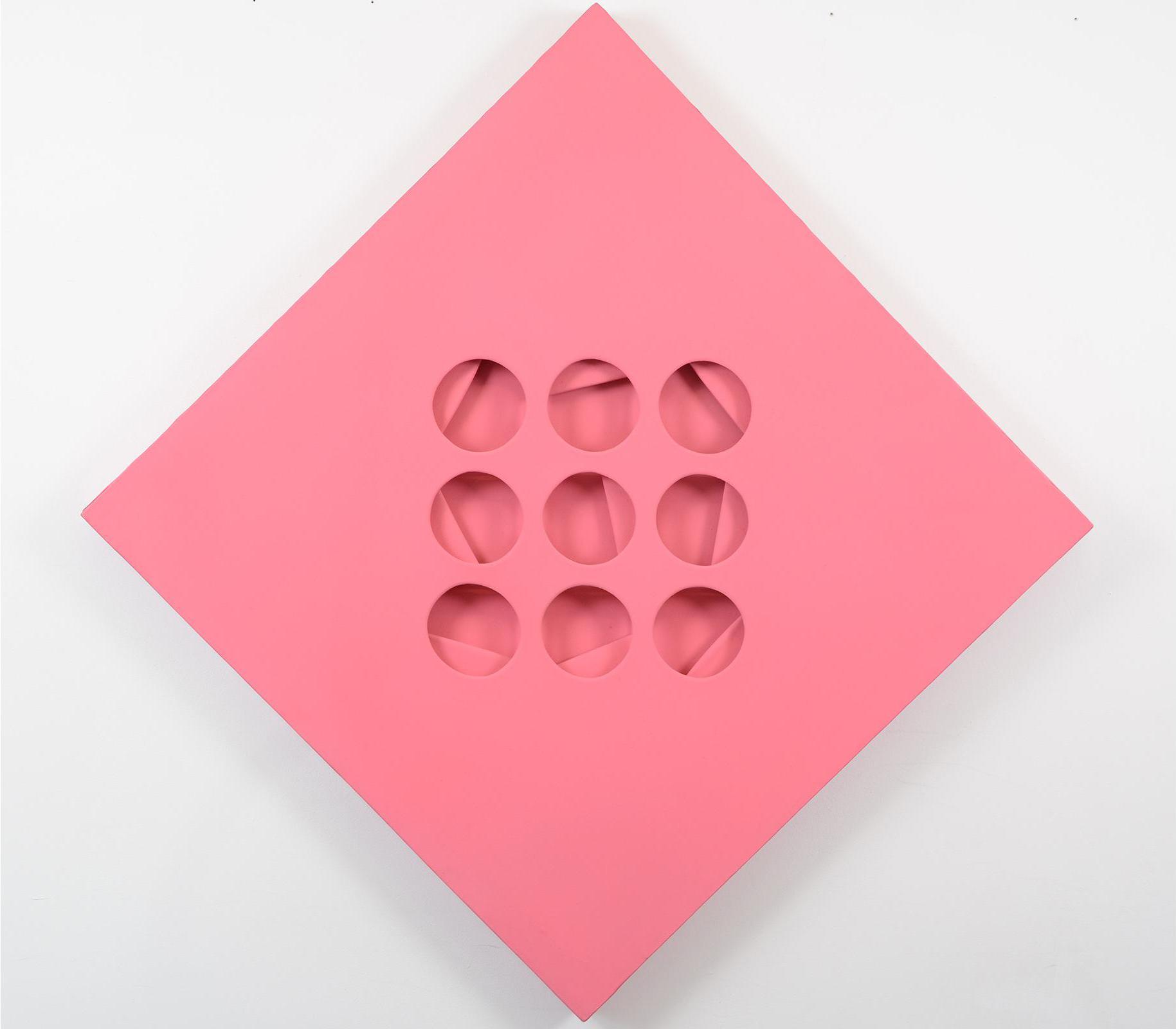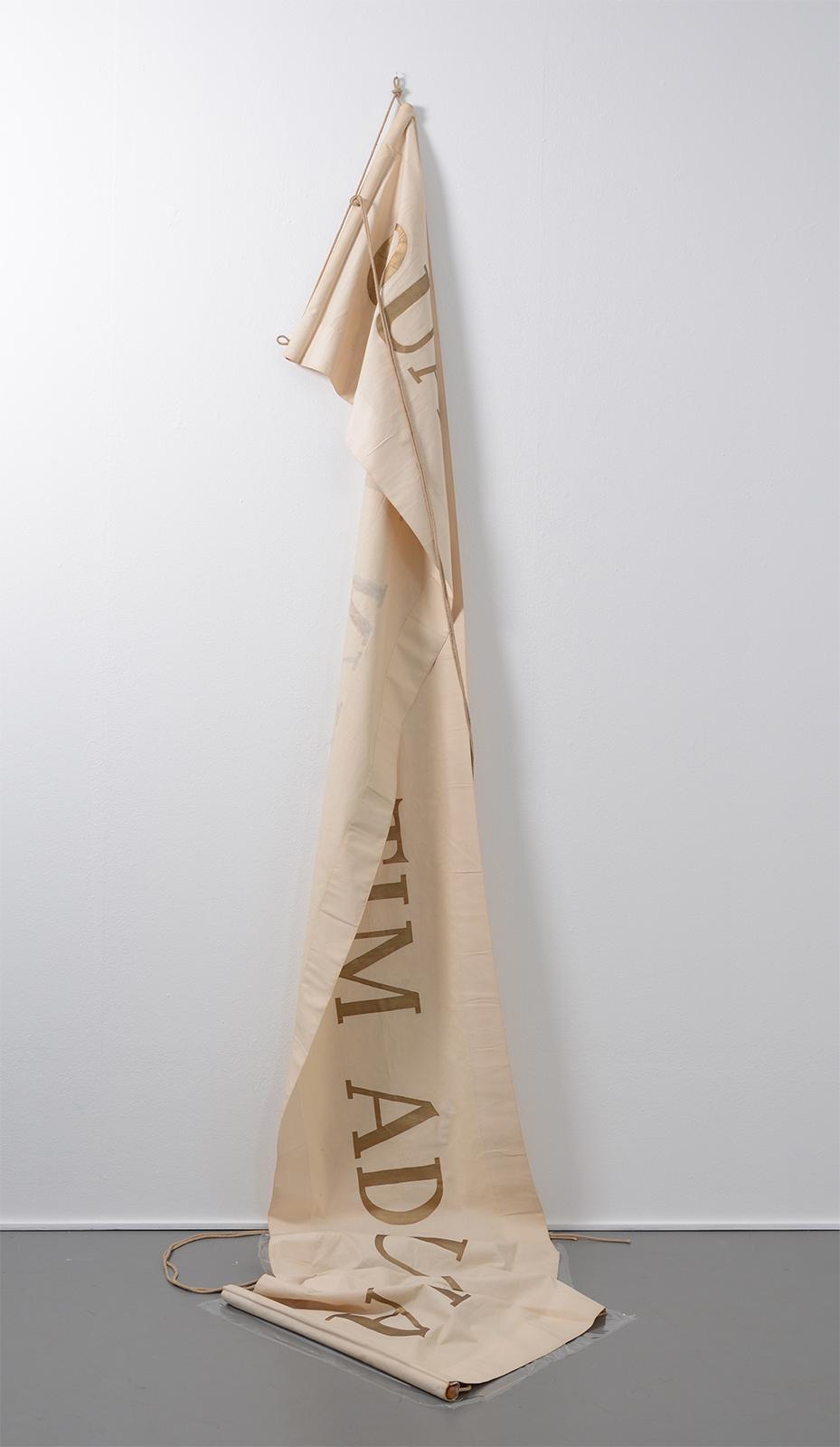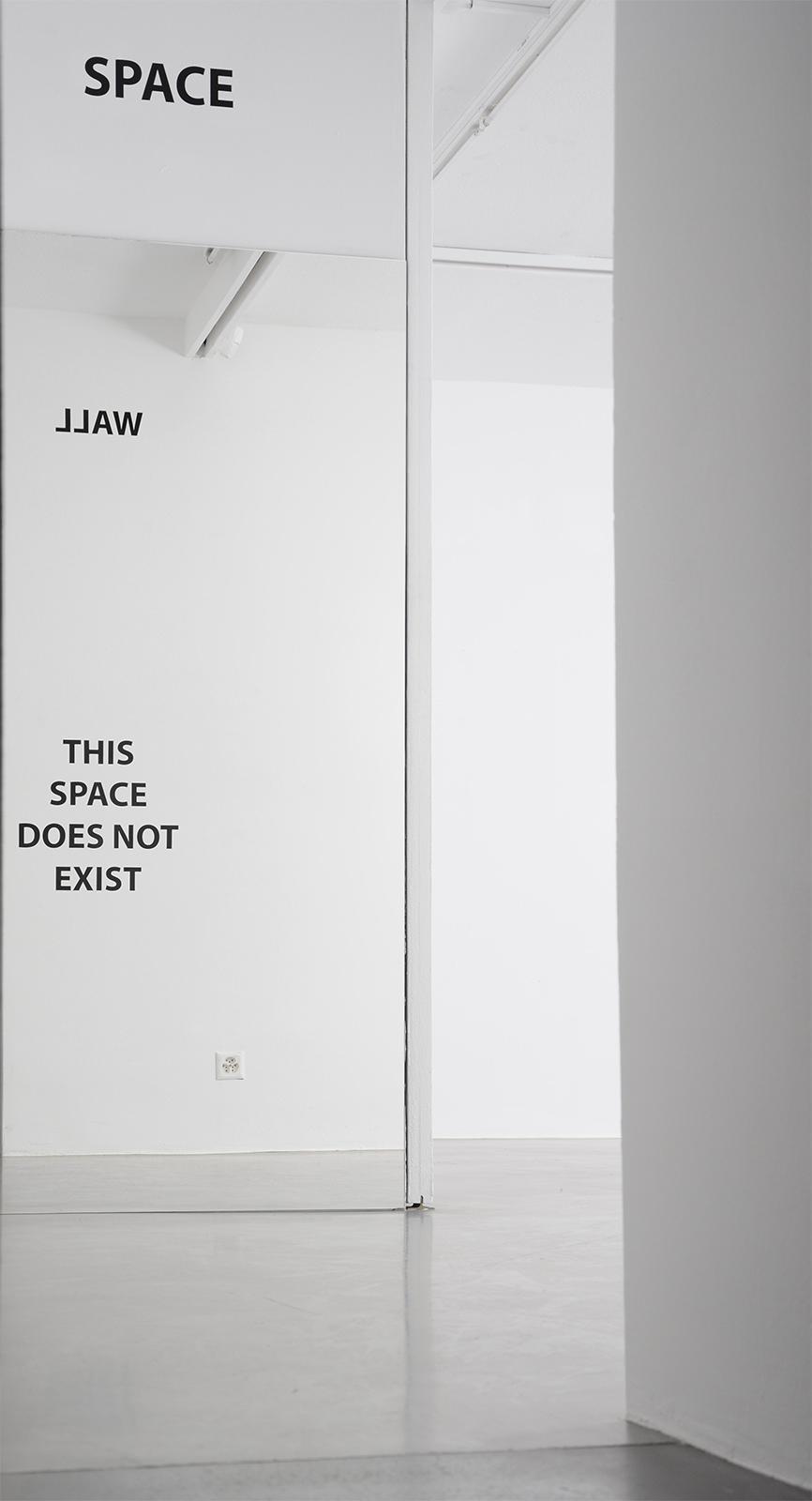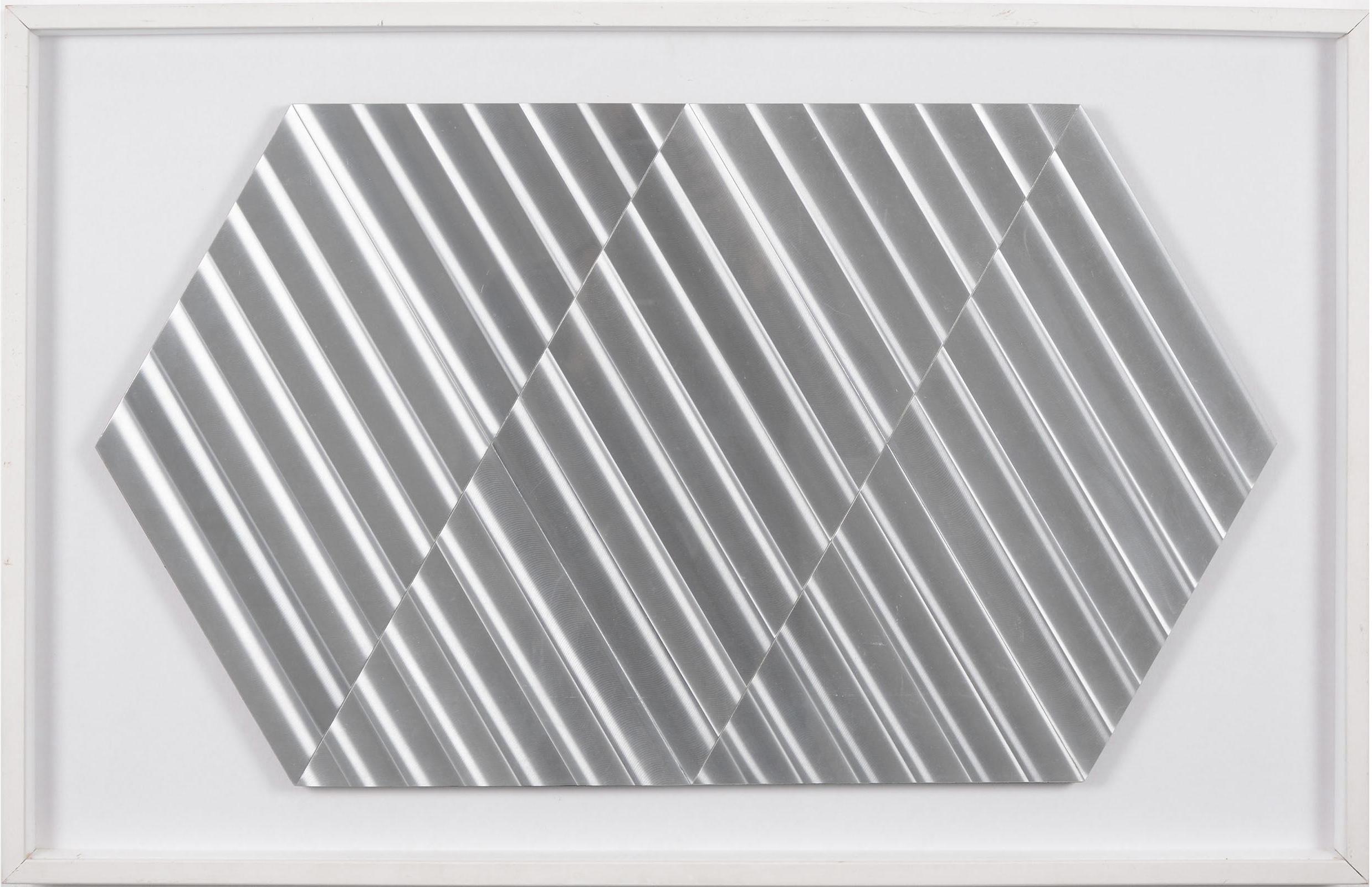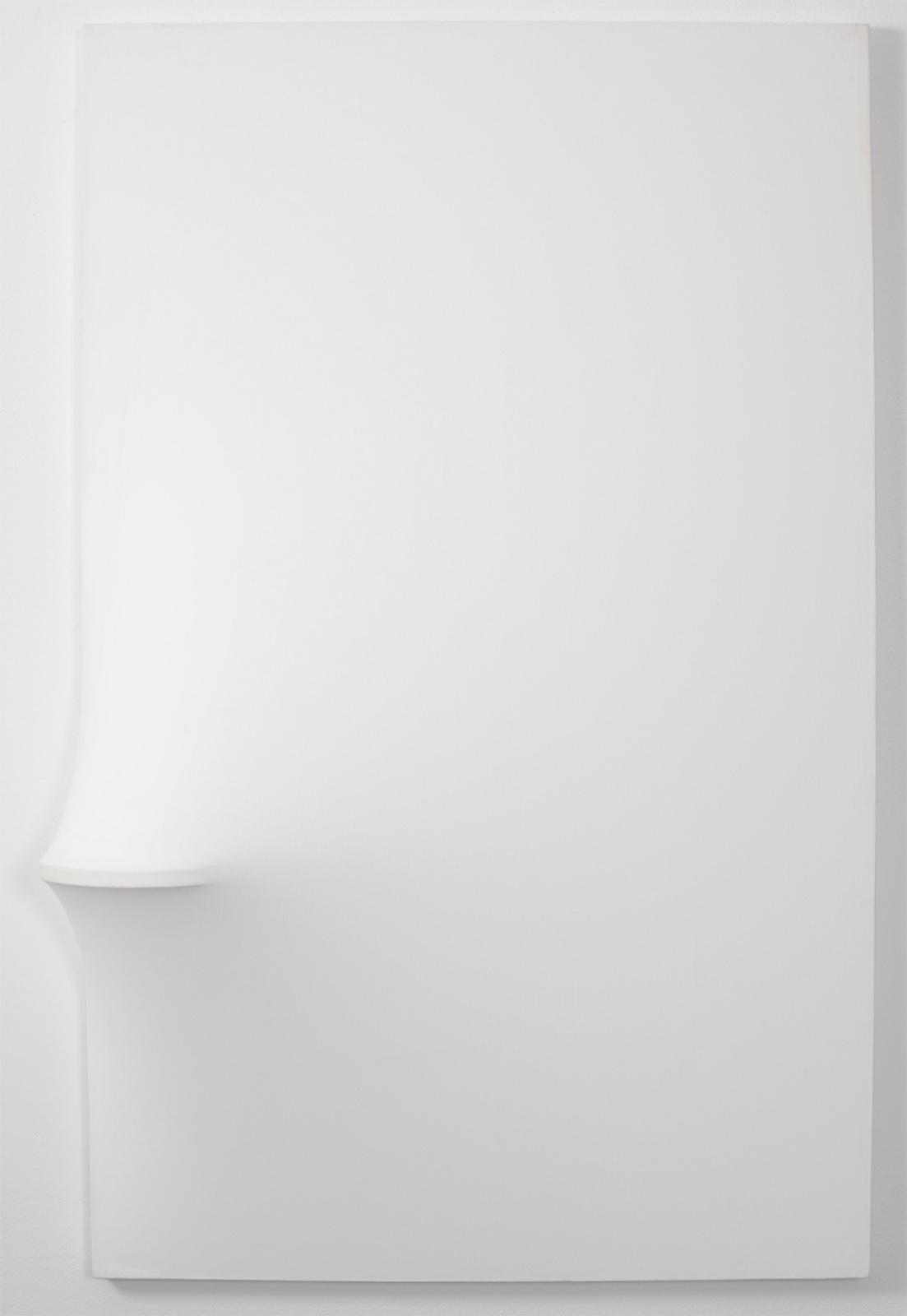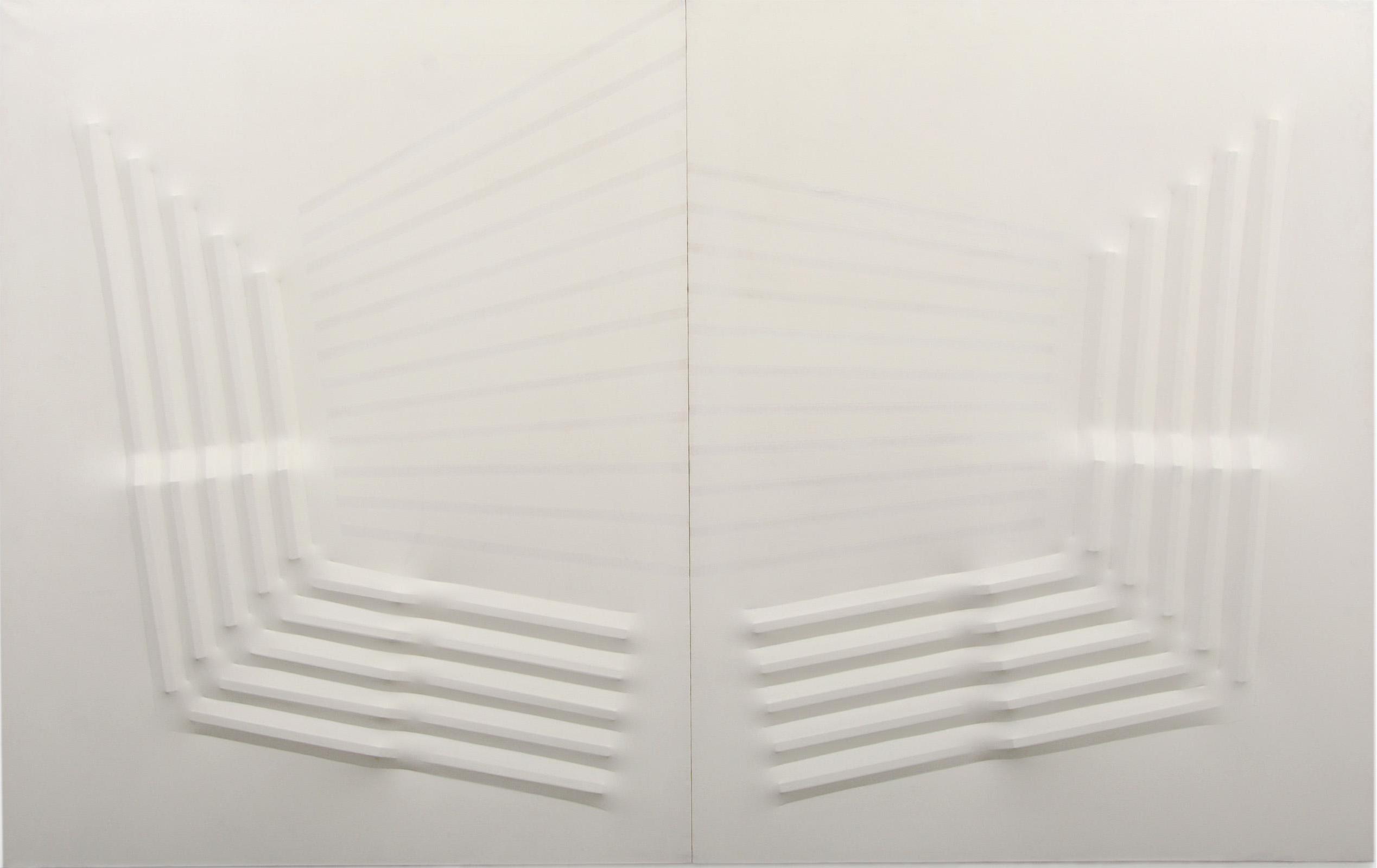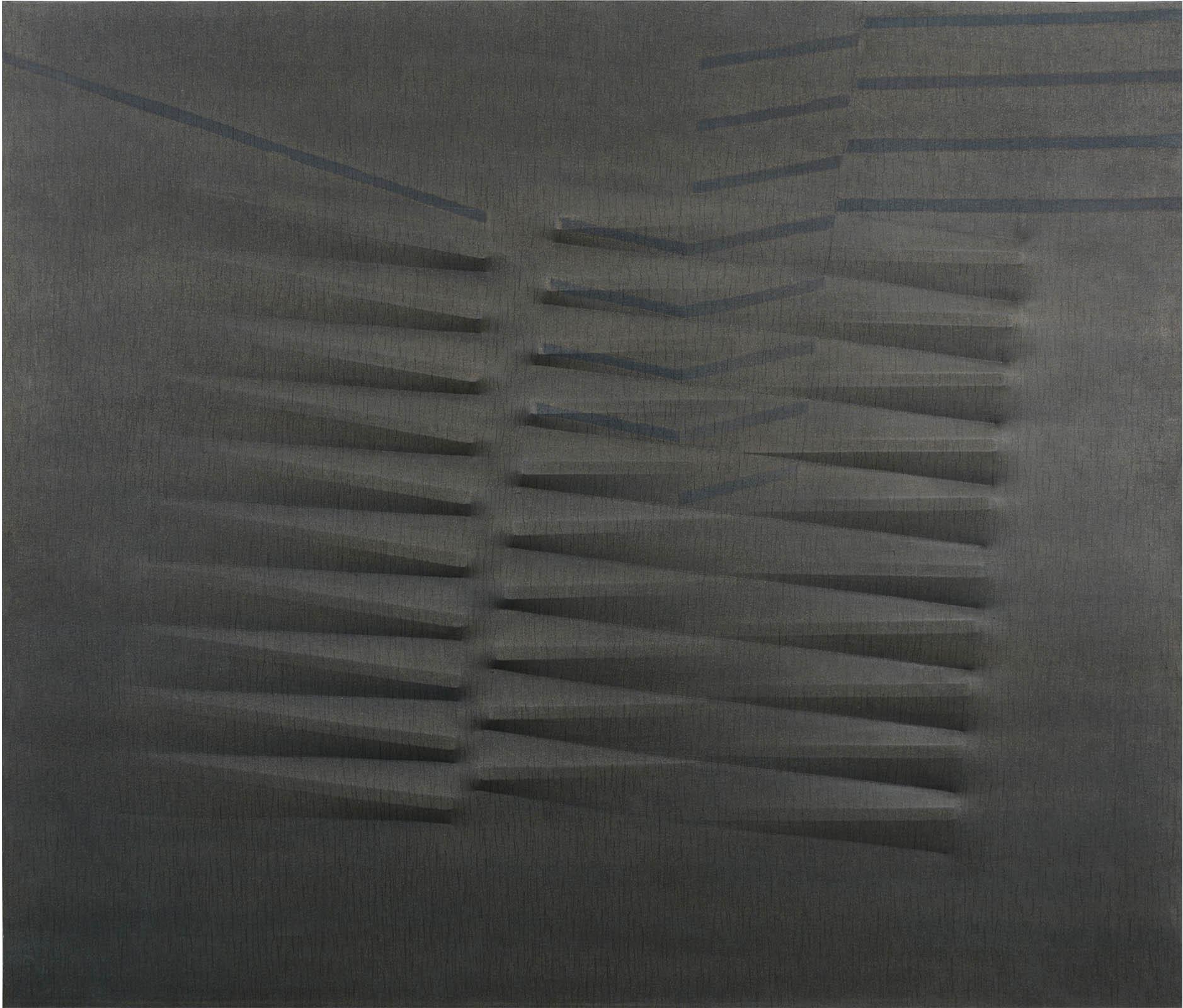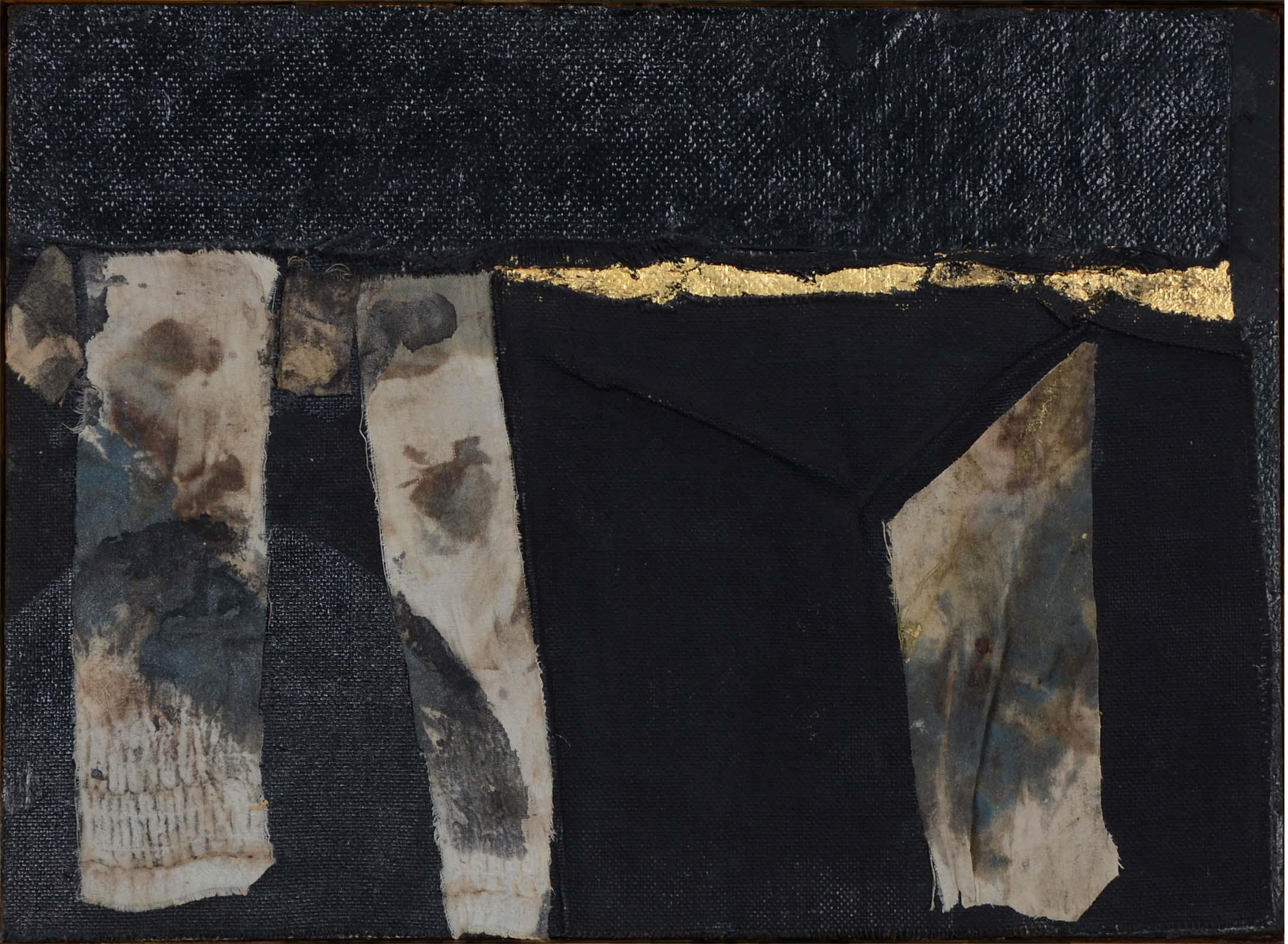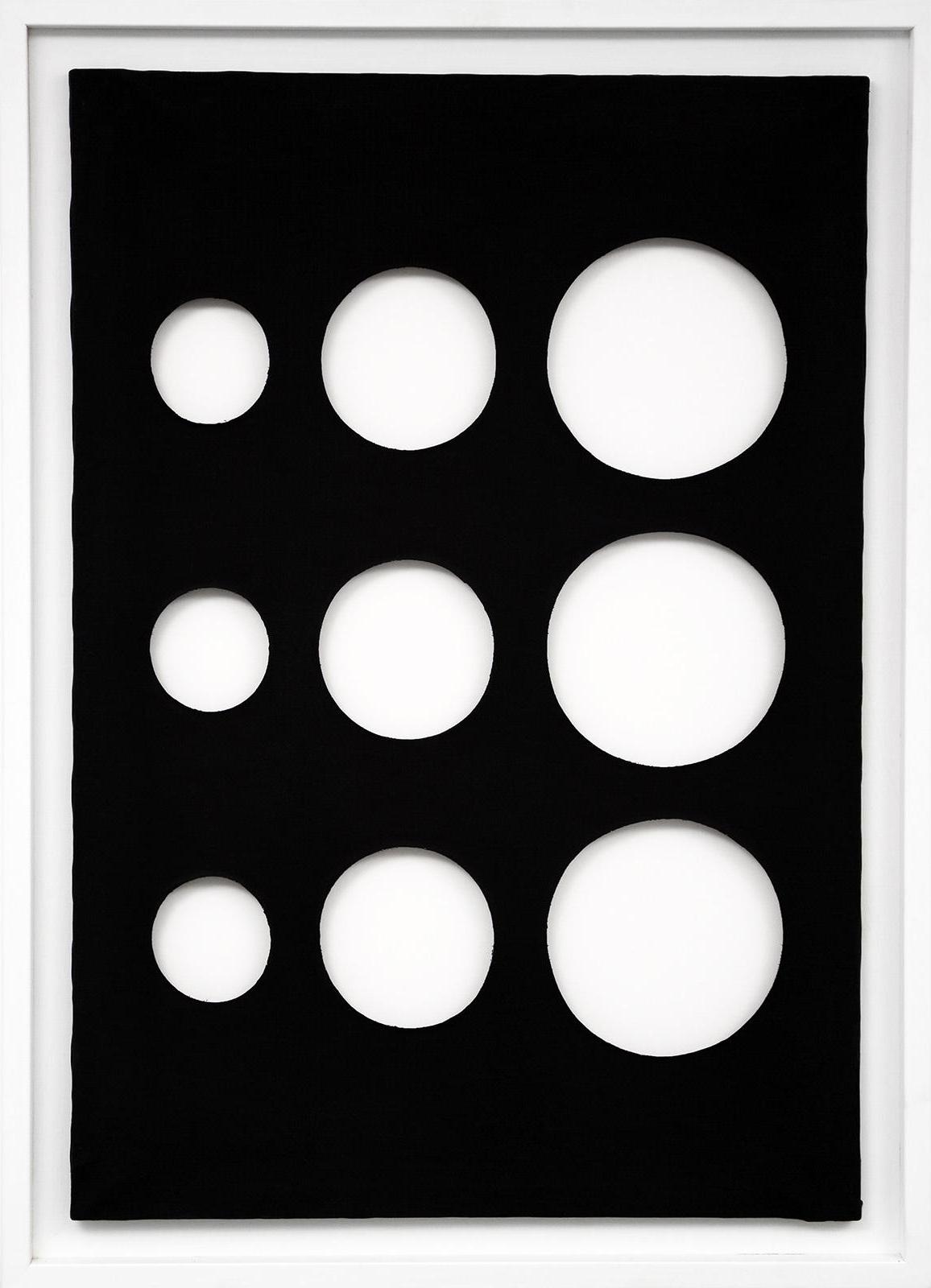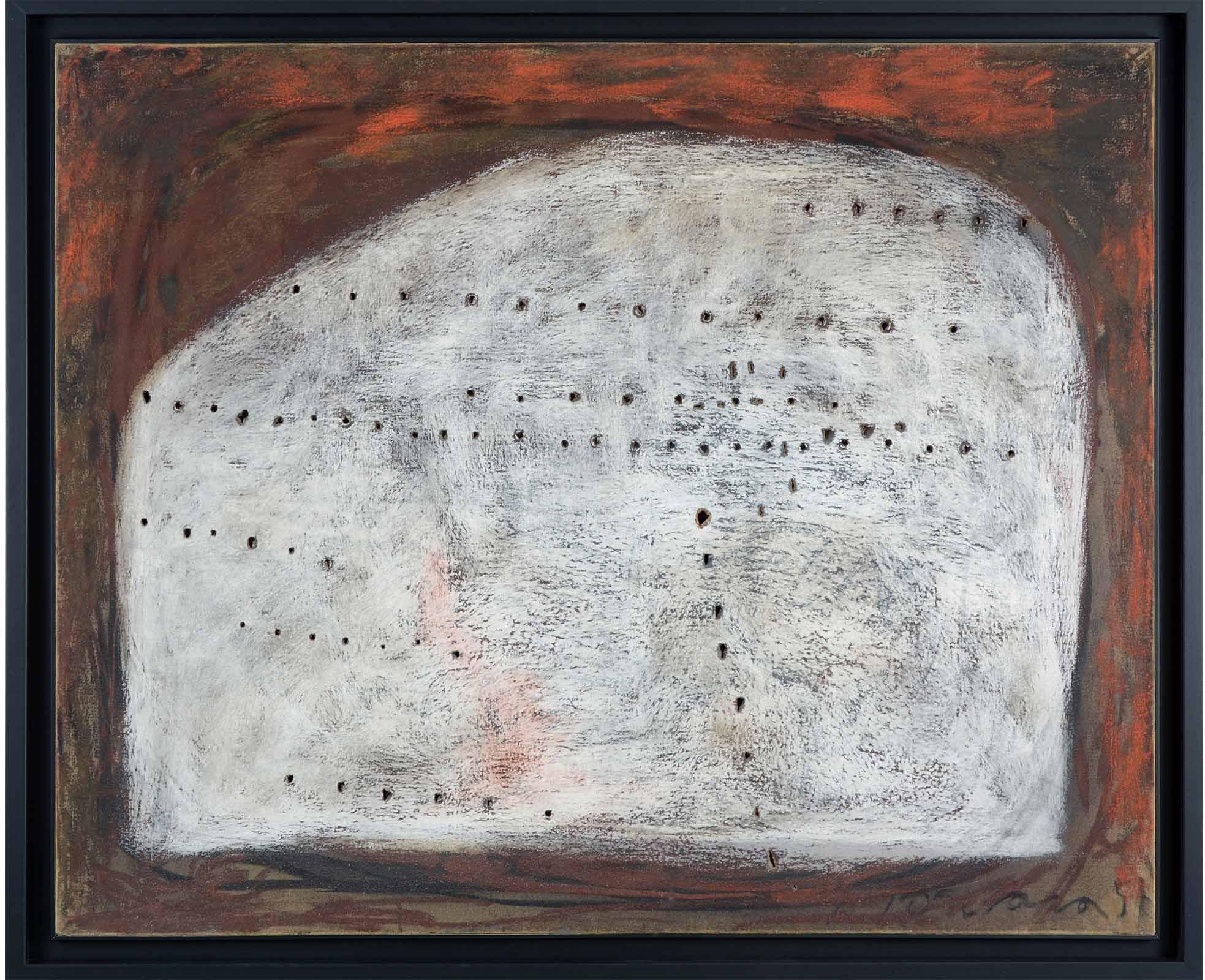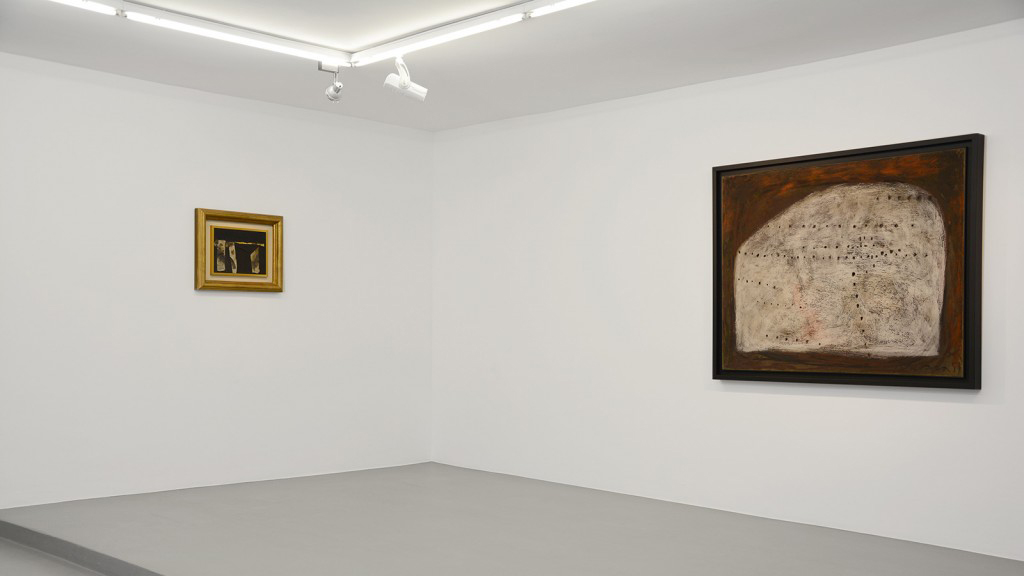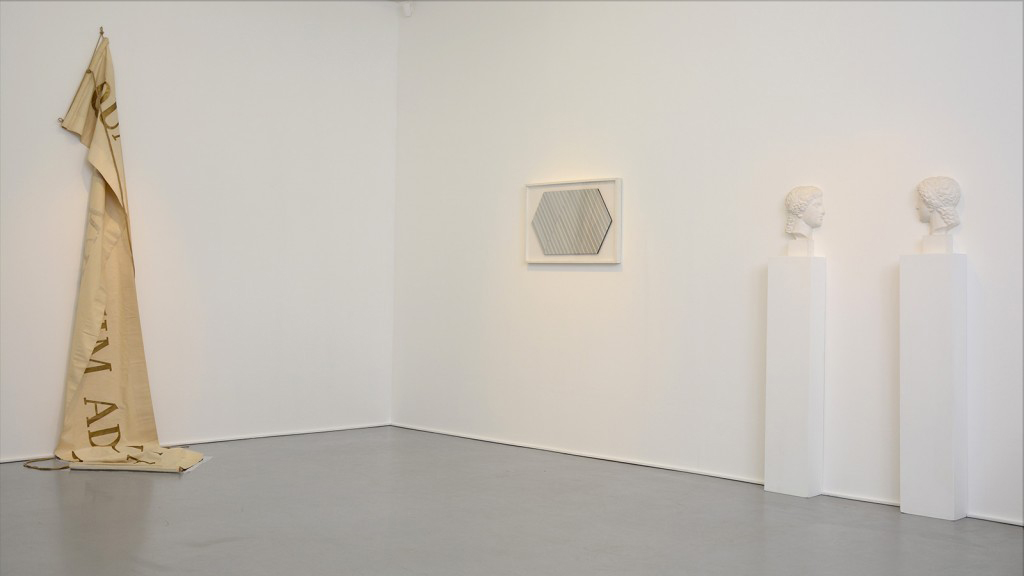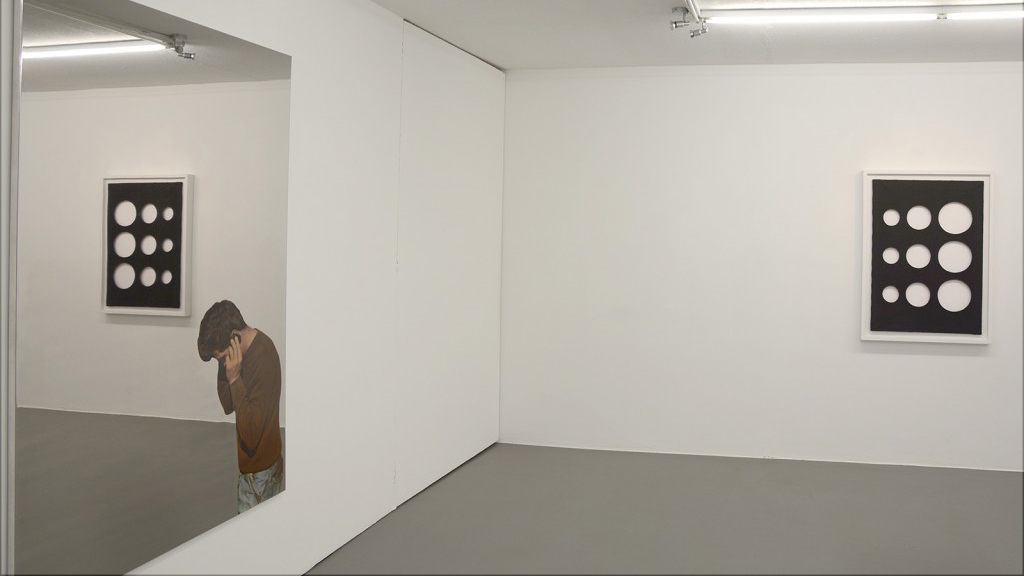Trasformazione
-
![]() Michelangelo Pistoletto
Michelangelo Pistoletto
Una Telefonata,2010
Screenprint on polished stainless steel
180 x 125 cm -
![]() Paolo Scheggi
Paolo Scheggi
Base Quadrata,1969
Oil on overlaping canvas
90 x 90 cm -
![]() Giulio Paolini
Giulio Paolini
Quam Raptim ad Sublimia,1969
Varnish on cotton fabric
65 x 240 cm -
![]() Michelangelo Pistoletto
Michelangelo Pistoletto
Questo Spazio non Esiste,1976
Mirror, vinyl adhesive letters
Variable dimensions -
![]() Getulio Alviani
Getulio Alviani
Superficie a Testura Vibratile,1973
Aluminium on wood
42 x 73 cm -
![]() Agostino Bonalumi
Agostino Bonalumi
Bianco,1967
Shaped canvas and vinyl tempera Soft pack
120 x 75 cm -
![]() Agostino Bonalumi
Agostino Bonalumi
Bianco,1975
Shaped canvas and vinyl tempera
150 x 240 cm -
![]() Agostino Bonalumi
Agostino Bonalumi
Grigio,1984
Shaped canvas and vinyl tempera
130 x 150 cm -
![]() Alberto Burri
Alberto Burri
Studio per Composizione,1954
Fabric
26 x 34 cm -
![]() Dadamaino
Dadamaino
Volume,1960
Waterpaint on canvas
99.6 x 70 cm -
![]() Lucio Fontana
Lucio Fontana
Concetto Spaziale,1957
Pastels and holes on canvas
100 x 122 cm
The exhibition TRASFORMAZIONE showcases works by Italian Post-War II Avant-garde artists. Through the context of the late 1950s and the early 1960s a need for a total transformation of creative vision aroused. Once the historical and cultural disillusionment resulting from World War II had been overcome new perspectives tied to the post war developments of art informel responded to the contemporary world. Italy and in particular Milan was a connection point for this movement across Europe. It experienced profound changes and became a backdrop for great urban and media spectacle of modernity, a rediscovered city of Futurism within the new geography of art. Umberto Eco described in his book “The open work” (1962) how contemporary artists “opened” their works not only on the content level to explore the ambiguity of meaning and the plurality of interpretations but also on the formal level by integrating everyday objects and language or extending the work by using the own body as well “dropping out” directly into life through social and political engagement.
One of the most influential movements is considered to be “Arte Povera” – a term coined by art critic and curator Germano Celant in 1967, who organised the exhibition “Arte povera e IM spazio” in Genova. Michelangelo Pistoletto (* 1933, Biella) is acclaimed to be one of the main exponents of Arte Povera. With his Mirror Paintings of the 1960s he achieved critical recognition deconstructing the traditional notion of painting by reflecting the surroundings and the viewer as part of the image. This link between art and live has always been a crucial point in his oevre resulting in the foundation of Cittadellarte: Fondazione Pistoletto, a trans disciplinary platform for creativity studies of all kinds that aimed to open a space to debate environment, politics, economics, education and spirituality. As well Giulio Paolini (* 1940, Genova) was part of the first exhibition of the Arte Povera movement exploring conditions of author and viewer. From 1972 onward he created a series of so-called “Idem” works based on classical mythology questioning notions of art, originality and reproduction. In the same year he participated in documenta 5 in the group section “Individuelle Mythologien” (“individual mythologies”), a key term coined by the curator Harald Szeeman of positions dealing with the interrogation of reality.
Exchange and travel were at the core of this moment in history. Many American artists such as Kooning, Rauschenberg, Rothko and Twombly spent time in Rome, the place where Alberto Burri (* 1915 Cittá di Castello; † 1995 Nice, France) lived for a long period in his live and emerged as one of the post-war Italian pioneers. Earning a medical degree he was sent to Libya as a medic, when Italy entered World War II. In 1943 after the Axis forces were defeated at El Alamein, his unit was captured in Tunesia and he was interned in a prison camp in Texas where he began to paint. Burri garnered attention investigating in the use of non-traditional materials such as burlap, wood, tar, plastic, zinc oxide, kaolin, PVC adhesives, cellotex and fabric. He experimented with cutting, tearing, and stitching as well as burning or torching the surface of different materials. The surface of the so-called Sacchi were assumed as wounds, cuts and torns, reflecting disorder and post-war trauma, simultaneously, this metaphor of the skin went through a process of scarring and healing.
Rethinking materiality was one concern of the Italian Avant-garde additionally a group of artists around Lucio Fontana explored questions of space, matter and energy. Their monochrome works often invite the viewers to plunge into the infinite spaces. However, rather than celebrating a blind faith in progress, the most successful exploration of movement in real time and space in the visual art of the 1960s was to emphasize the precarious balance between construction and deconstruction, appearance and disappearance. Already in 1946 Lucio Fontana (* 1899 Rosario, Argentina; † 1968 Comabbio) initiated the “Manifiesto blanco” asking to turn away from conventional materials and proclaiming a synthesis of painting, sculpture, music and poetry. He aimed to liberate the artwork of any pictorial and propagandistic rhetoric only existing in the viewers imagination. From 1958 onward he realized his “Tagli” works with slashes in the painting’s surface backed by Gaze to increase the spatial effect destroying the image medium and thereby the basic conditions of painting. His “Concetti spaziali (Spatial concepts) tried to achieve the expression of an forth dimension became a ground-breaking new aesthetic idiom. Following his mentor Fontana Agostino Bonalumi (* 1935, Vimercate; † 2013, Milan) developed the idea of “pittura-ogetto” (painting objects) going beyond the idea of canvas. He participated in the Azimuth magazine and exhibition at Azimut gallery founded by Castellani and Manzoni, later on in the international ZERO movement. In 1966 when he was invited to 33rd Venice Biennale for the first time, his works where shown in the same room as the ones by Paolo Scheggi. Paolo Scheggi’s (* 1940, Florence; † 1971, Rome) approach has been from the beginning of strong multidisciplinary character and ranging from visual arts to architecture to fashion, from poetry to urban and theoretical performances reflected always conceptual and metaphysical questions. He was founder of the art and literature magazine il malinteso and editor of Marcatré. Moving to Milan in 1961 he became part of the Milanese Avantgarde and joined the group around Azumith as well as international movements such as nove tendencije, Zero and Nul. Among others he became friends with Eduarda Emilia Maino, known as Dadamaino (* 1930, Milan; † 2004, Milan), who is considered to be one of Italy’s most progressive female artists. She was included twice in the Venice Biennale. After completing a medical degree the self-taught artist frequented by the end of the 1950s the group around Lucio Fontana getting in touch with his spatial concepts. Later she joined the Azimuth group, Zero, Nul and nove tendencije. From 1958 onward she received much attention of her work series what she called “Volumes” that feature large punctured holes. In the 1970s she explored Op-Art in a series of optical-psychedelical paintings fascinated by the idea of movement. In his works often made out of steel and aluminium the artist Getulio Alviani (* 1939, Udine) pioneered the Op-Art movement in Italy confronting the viewer with questions on reason, relativity, motion and perception. With his polished aluminium surfaces – “Superfici a testura vibratile” (vibrating texture surfaces) – he won international acclaim. He was also part of the exhibition nove tendencije in Zagreb and exchanged ideas with artists of the so-called G.R.A.V. (Groupe de Recherche d’Art Visuelle) in Paris who explored opportunities of dynamic art. In 1964 he successfully shared a room with Enrico Castellani at the Venice Biennale and was invited in 1968 to Kassel’s Documenta 4. Furthermore he took part in the prestigious show “The Responsive Eye” at MoMA in New York.
The exhibition curated by Anna Fech attempts to show how artists of the Italian Post-War II Avant-garde re-established a new visual language and brought together different possibilities for a new art going beyond the pictorial surface and subject to create a new and free relationship with the space, the world and the universe.
